THE RENDERING OF MODERN LIFE
WILL BRADLEY
“Paris changes! But nothing in my melancholy
Has changed. New palaces, scaffolding, blocks
of stone,
Old neighbourhoods, all turn to allegory
And memories weigh more than stone.”
I.
I’m already looking forward to the opening of the new Nasjonalmuseet, not because I’m excited about the glass in the new building, or because I’m hoping for an invite to the champagne party, but because I’m missing the art. In particular, I’m missing the painting that, since 1923, has been the highlight of the collection, and that to me has always been the best part – the central purpose – of any visit to the Nasjonalgalleriet: Édouard Manet’s View of the 1867 Exposition Universelle. Over the years, as it hung there, still unfinished, almost pointedly uncelebrated, I began to develop my own particular thesis around it, and ultimately to consecrate it as a lost, sacred text of Modernist urbanism.

The first thing you notice is what’s missing. The Exposition Universelle itself is almost invisible, a mere flurry of grey brushstrokes on the horizon. The real subjects of the painting are the people – a gardener, a group of women, a figure on a horse, three soldiers, a child with a dog – who are facing us with their backs to the view, and a few others who are looking up at an enormous hot air balloon that has floated into the top right corner of the picture. Why are we ignoring the Exposition? Because they refused to exhibit our paintings, that’s why. Why are we looking up at a hot air balloon? Because it is the marvellous Le Géant, flown by the photographer Nadar, the good friend of our good friend Charles Baudelaire.
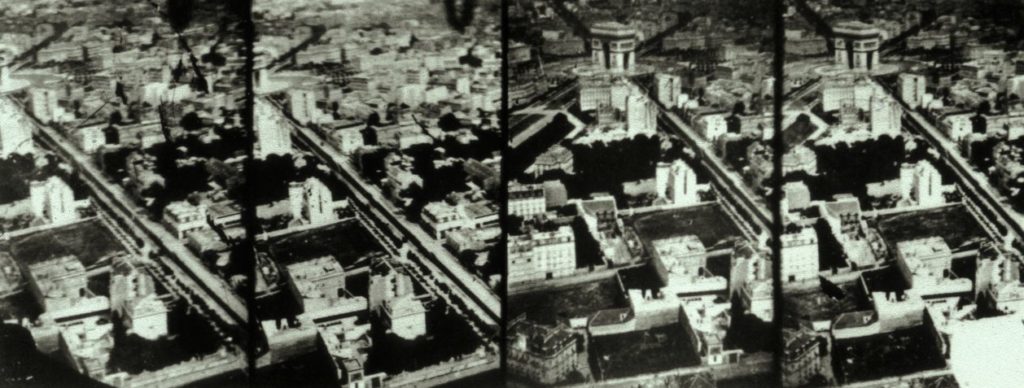
Just nine years earlier, in 1858, Nadar had made the world’s first aerial photographs, of Paris of course, revolutionising the understanding of urban space. By 1863, Baudelaire had moved decisively to define the art of modernity against the art of history:
“For the sketch of manners, the depiction of bourgeois life and the pageant of fashion, the technical means that is the most expeditious … will obviously be the best. The more beauty the artist can put into it, the more valuable will be his work; but in trivial life, in the daily metamorphosis of external things, there is a rapidity of movement that calls for an equal speed of execution from the artist. … he is the painter of the passing moment and of all the suggestions of eternity that it contains.”
Now, it’s 1867 and you can see, actually discern on the canvas of the View…, Manet willing himself to manifest that passing moment. And as it turns out, he does. He resolves the central problem of this staged spontaneity: how to make it feel like real life, make it look natural, while still having it say what you want it to say. And there is genius in the resolution, the speed and correctness of the one-shot execution (there is almost no reworking or overpainting), the strangely luminous darkness and fluidity of the figures, the perfect spectres of the horse and dog. The hierarchy of precision that focuses, finally, all of the picture’s energy on the face of the boy in the right-hand foreground, the face of the artist’s son, Leon, because – this is what Manet’s passing moment wants to tell us – all of the pomp of the Emperor and his Exposition means nothing, nothing at all compared to those beloved features.
So the View of the 1867 Exposition Universelle was a turning point. Manet, having learned the secret he was chasing, abandoned the almost-finished painting to begin work on his masterpiece The Execution of Emperor Maximilian (ca. 1867–68), a picture that takes place within the moment of a gunshot. Baudelaire died a month later at the age of 46; Nadar wrote the obituary for Le Figaro.
But it’s striking how strongly the insights of Baudelaire, Manet and Nadar live on, and remain relevant to understanding the depiction of urban space; relevant, in particular, to understanding the ways the endless new city developments, which remain at the heart of capitalist modernity, are visualised.
II.
Two decades of hungry finance capital and neoliberal city planning mean that every architect in Europe is hustling for a piece of the future Oslo, and their visions are everywhere. So what does the city of these dreams look like and, more to the point, what do these dreams mean?
To try and answer that, I want to begin with the architect’s renderings of the new National Museum, where the View of the 1867 Exposition Universelle will be back on show from next year. This is Nadar’s angle, floating high above the fjord, offering a view that ordinary eyes will never see:
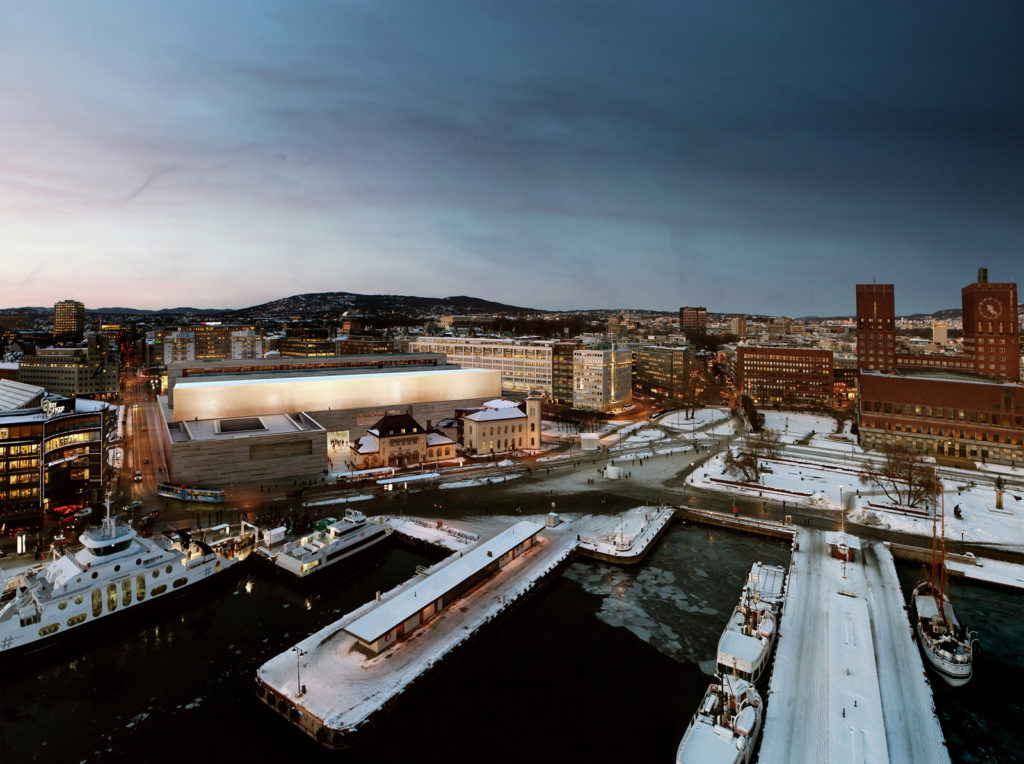
Here’s a failed version of Manet’s constructed casual moment, caption: The Museum Stole Their Souls!

And here, in the future museum café, is the sketch of manners, featuring Baudelaire’s dandies and idlers. They’re tidy and tame compared to their absinthe-drinking precursors, but still they’re happy doing nothing, happy going nowhere, happy with the important work of just being themselves.

In the central figure at least, we start to see the dream take shape; we start to sense – though not, importantly, to be conscious of sensing – that the true function of social space is as a stage on which to display the apparently effortless assumption of individual freedom.
This future city belongs, first and foremost, to these gentlemen and ladies of leisure, dedicated to the pursuit of pleasure. The Government Quarter is no longer a bureaucratic enclave, but a glittering space where young women parade in designer clothes…
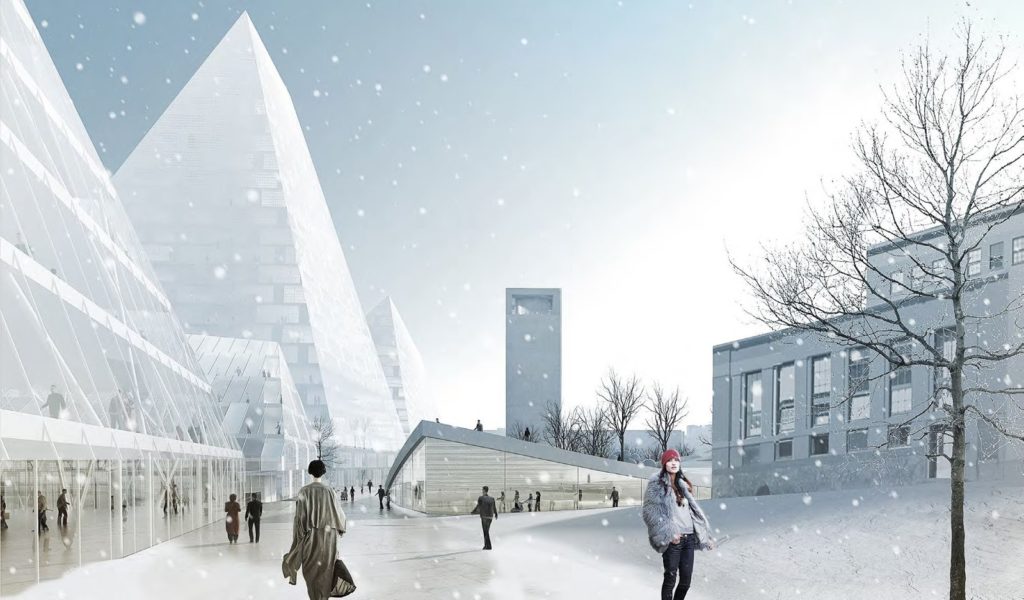
…young men run down woodland paths…
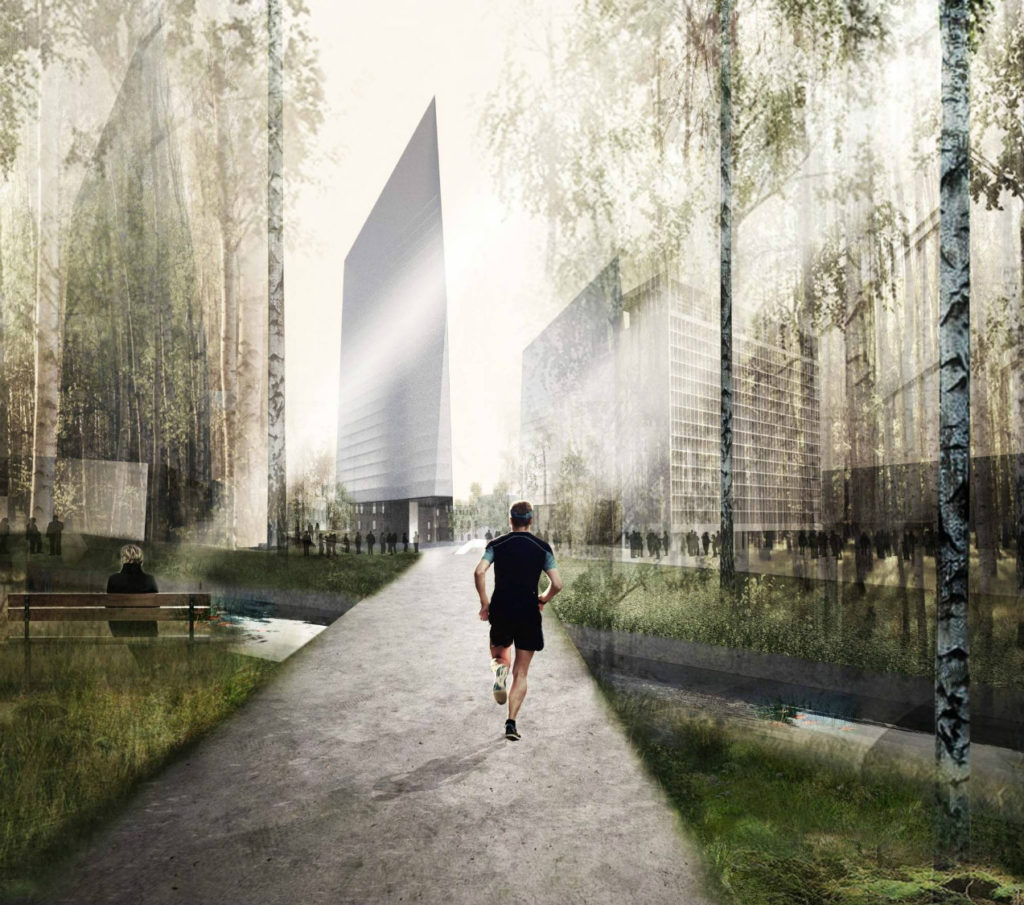
…and shirtless buskers blow giant bubbles, while children fly kites beneath pyramids of shining crystal.
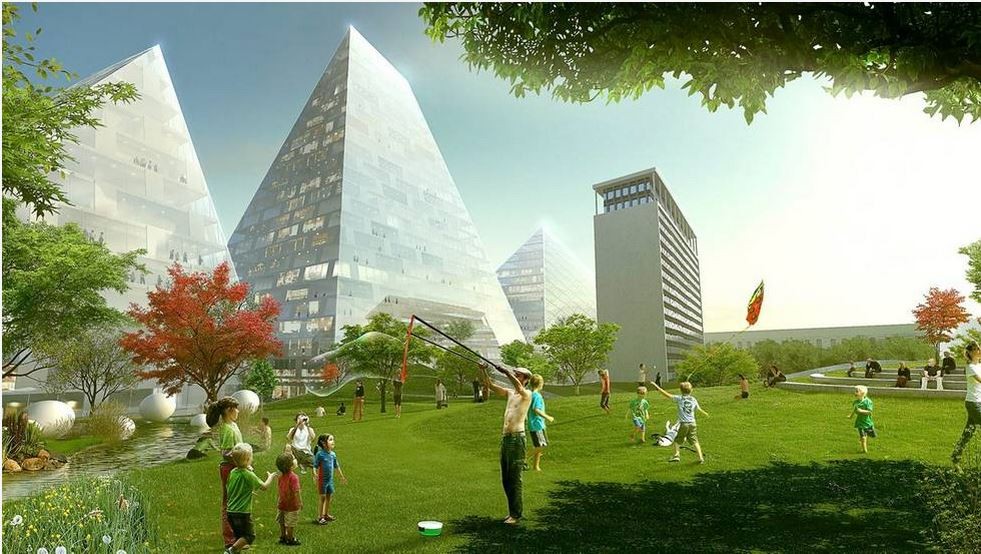
It’s always Sunday, and everyone’s just hanging out. The rucksacks and the strollers give it away. The only people here working for a living are the waiters.
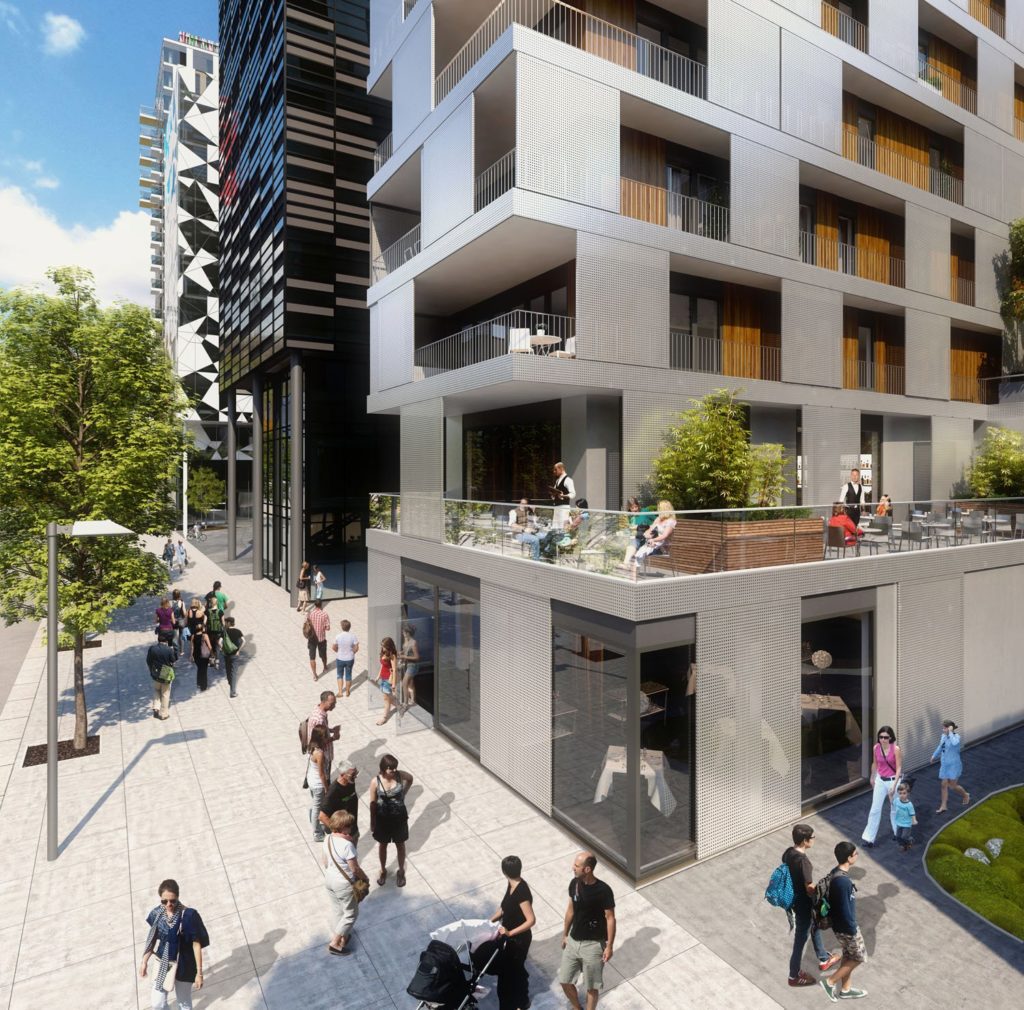
We’re in our shorts and shades in Schweigaardsgate, sipping on a beer.

If we have to travel, you won’t find us on the tram. We use rollerblades, or hoverboards, because we like our transportation to be personal, as unique as we are.
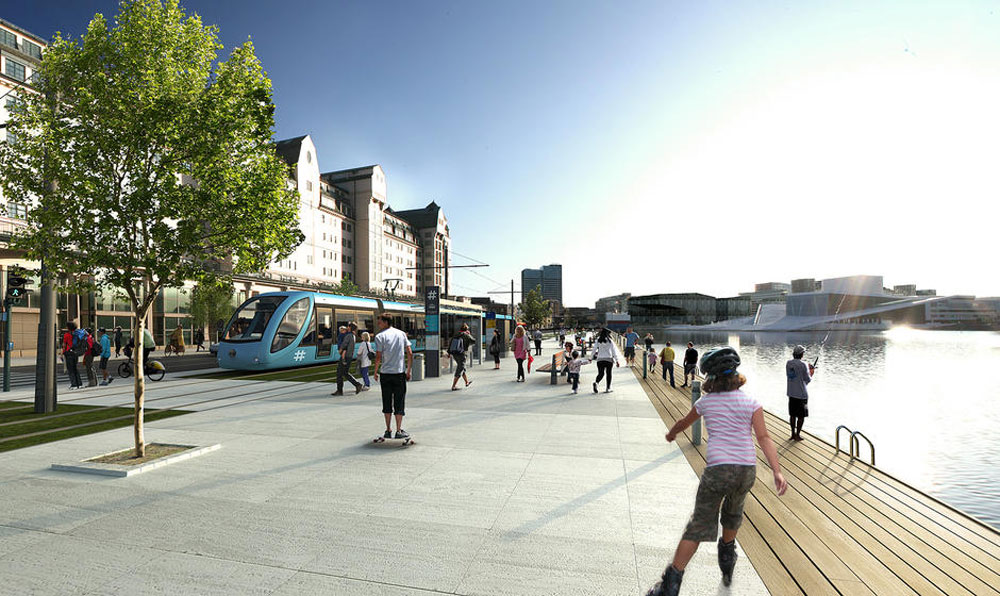
We’re kayaking in Bispevika…
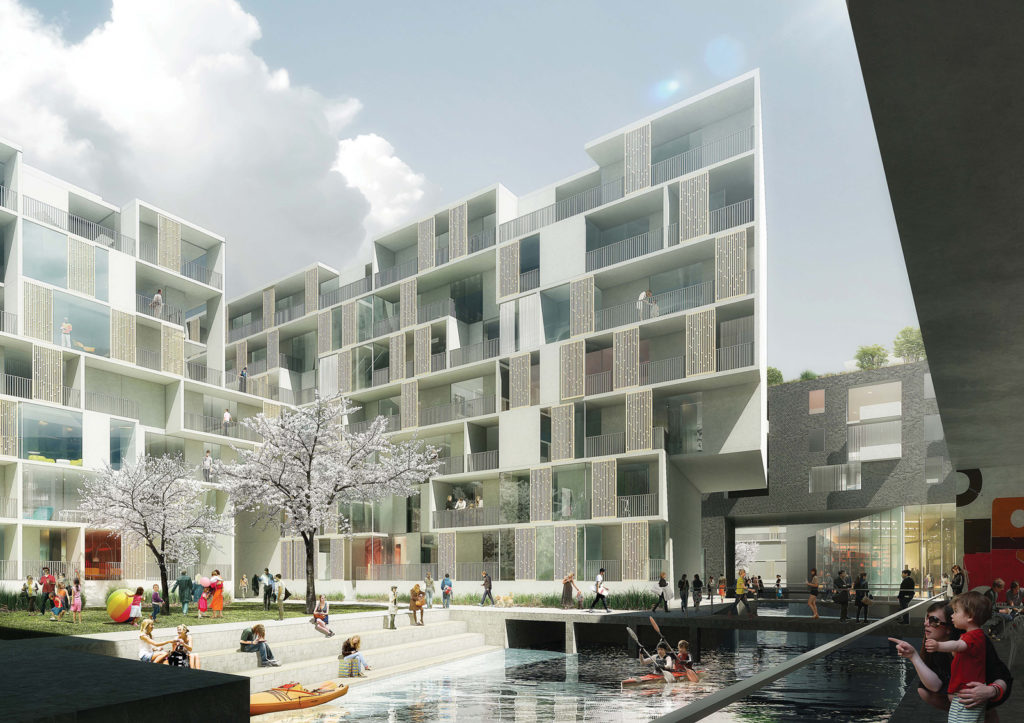
…we paddleboard to Fornebu…

…and in Lørenskog we Segway, to the new Mercedes showroom.
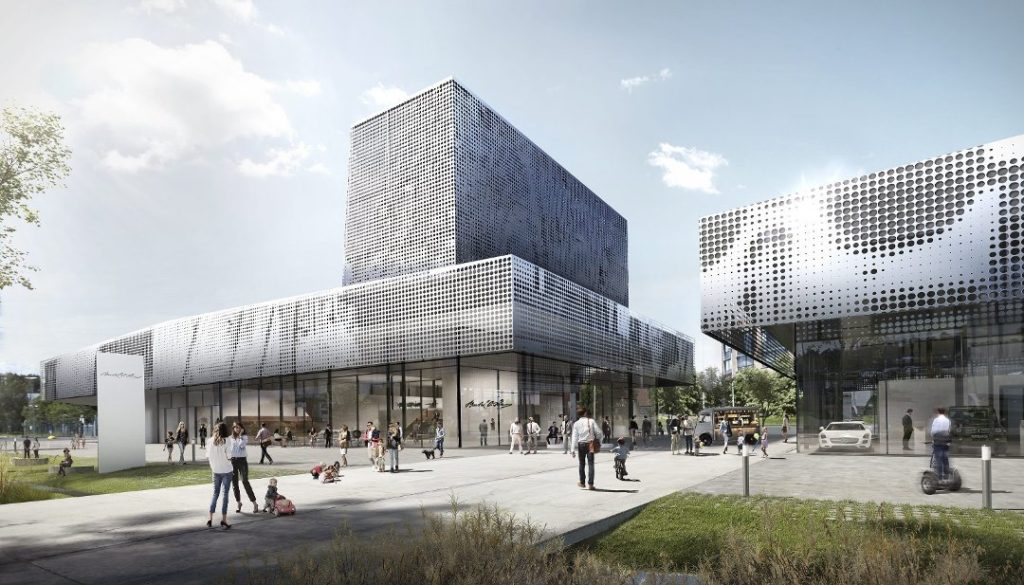
Over Filipstad we float, like Nadar, in our hot air balloons.

Of course, there’s no need to actually fly to see the virtual city from above. The balloons are here for different reasons. The balloons are here because we’re colourful and carefree.

The balloons are here because, for people like us, the sky’s the limit.
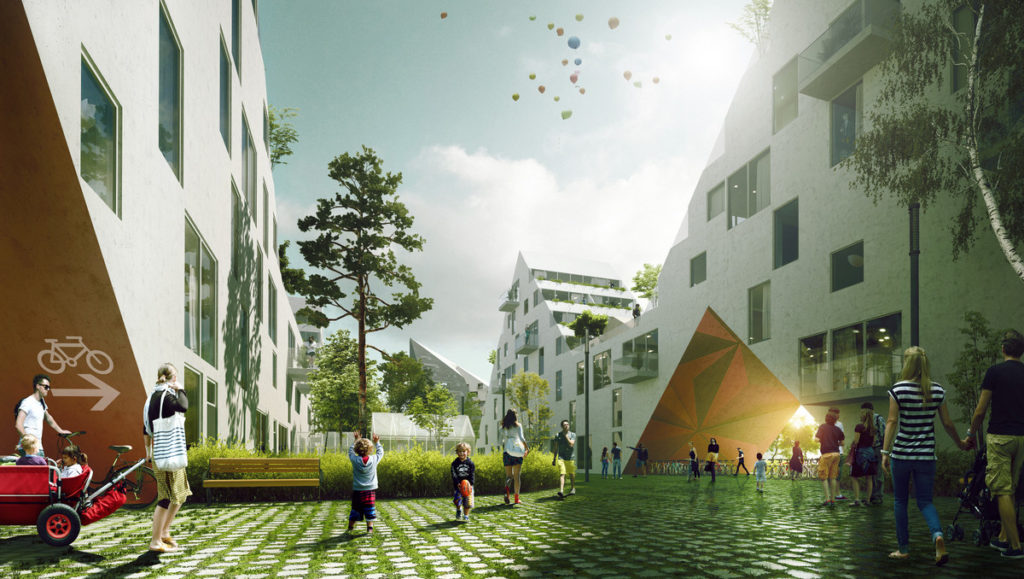
The balloons are here because we’re all children at heart, innocent monsters, and the city is our playground.
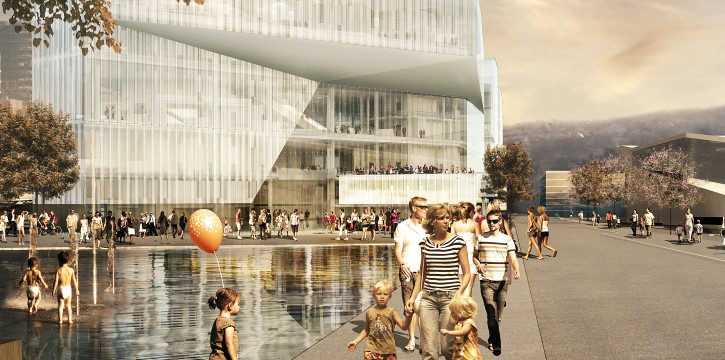
I think the kites are here for the same reason as the balloons.

But sometimes, along with the kites, there are birds, which twists the message just a little. Birds, freedom, duh. But also nature. Nature’s freedom. For you!

This flock of tropical egrets – that’s what they are, I checked – looks especially natural over Bispevika.

In Nydalen, we’re so close to nature that the geese live among us.
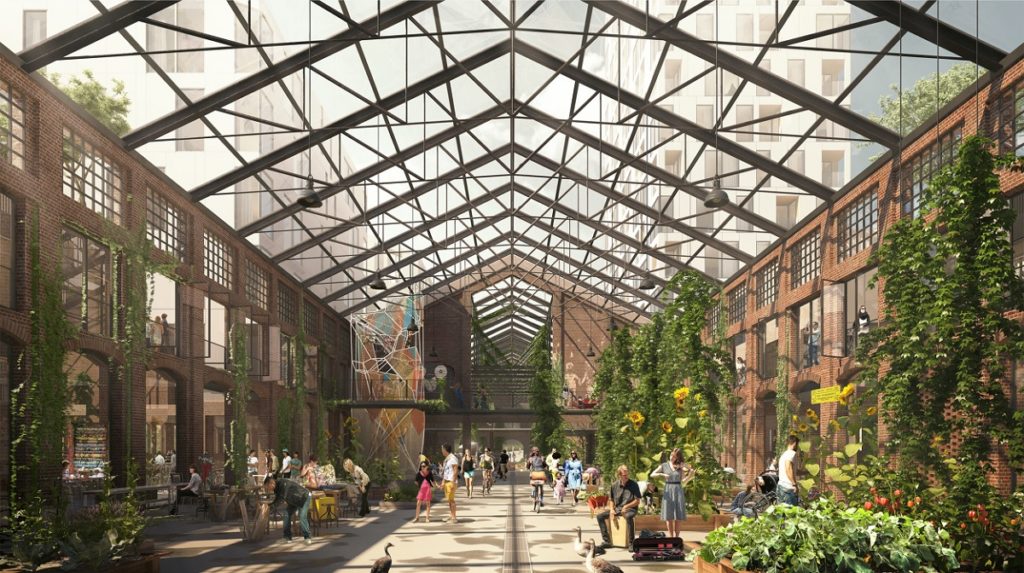
And plants are even better than birds. Nothing says modern urban living quite like weird, hypertrophic vegetation sprouting from the walls. Also, if you look closely, you can see members of the bourgeoisie actually saving the planet.

Luckiest of all are the citizens of future Økern, who have birds, balloons, and weird plants all at once, and who are, therefore, so filled with joi de vivre that they serenade each other on an outdoor grand piano.
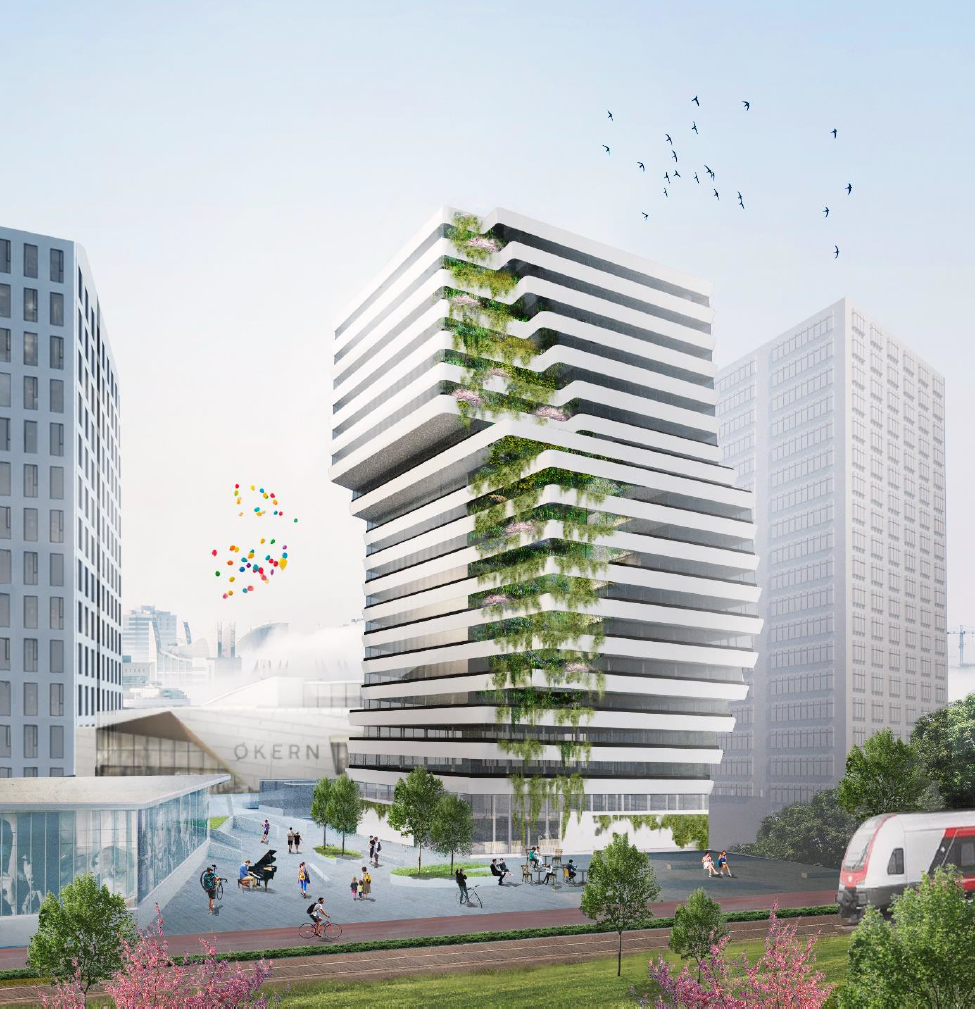
Sometimes the dream is so deep, the vision so strong, that whole buildings begin to glow.

Sometimes, the moment is so sublime that mere pixels can no longer contain it: the image overloads, burns out…

…and a godlike radiance rains down from above.

This is it. We have transcended.
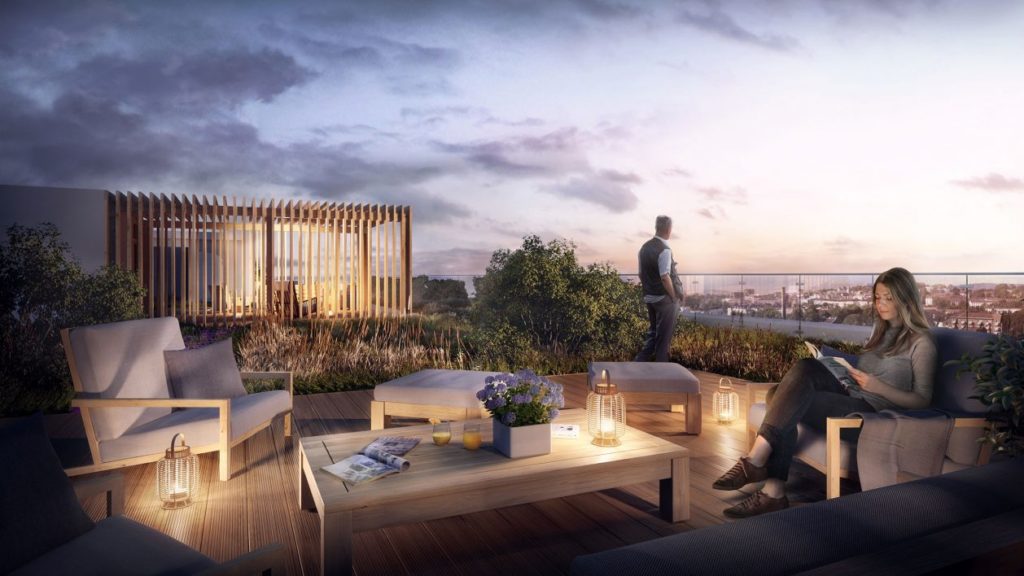
We have arrived.
III.
Now, I hear you thinking “Yes, but… ” So they’ve added a Segway, a paddleboard, an egret here and there. It’s part of their job. Nobody takes it seriously. In fact, I find it rather charming.
But you’re wrong. There is no Yes, but…
These images – these delicious and playful scenes, these futuristic, but somehow strangely reassuring promises, these golden panoramas – are not merely a little bit skewed. They’re wildly, overtly, perhaps clinically at odds with reality. Yet, they are produced and circulated by and for the people whose profession it is to decide how our urban environment will be. Not how it will look, superficially, but how it will actually, materially, be.
And, as far as it is realistically possible to determine, with the sole exception of one woman working behind the bar in the National Museum café, everybody in all these images is white. Everybody.
In the future, when the digital machinery of algorithmic capitalism attains some kind of consciousness and starts to dream, its dreams will look just like this. But for now, we can be pretty sure that this process is run by real live human beings. And they want it like this.
This what Brugata looks like, as reimagined by the aptly named White Architects.

Everybody in Kjelsrud is white.
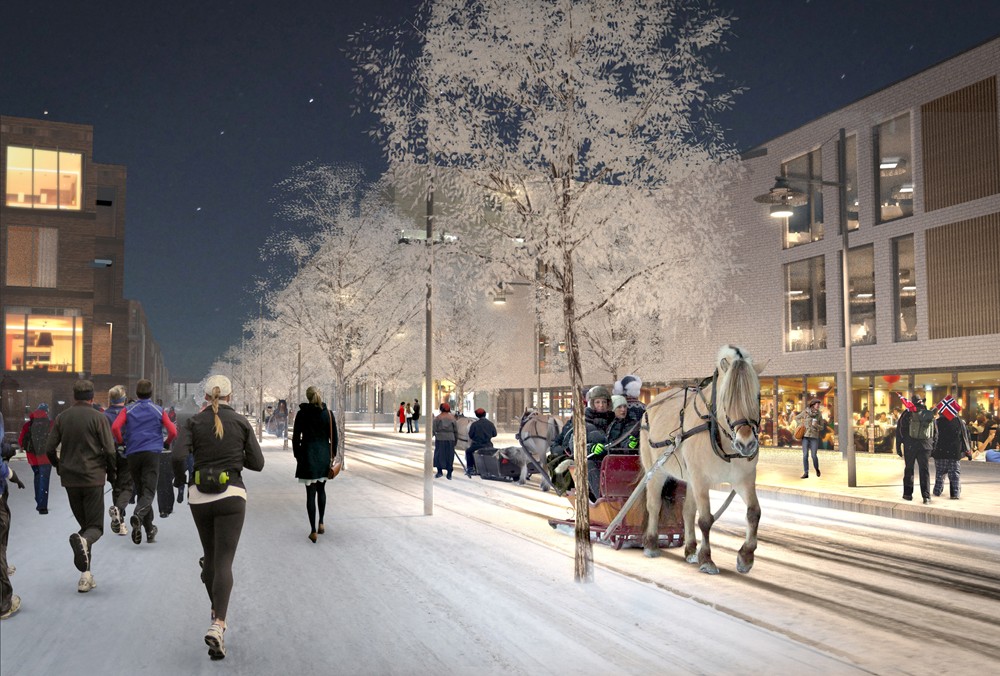
The cyclists at the Groruddalen T-bane station are white.

Everybody on the roof in Ensjø is white.
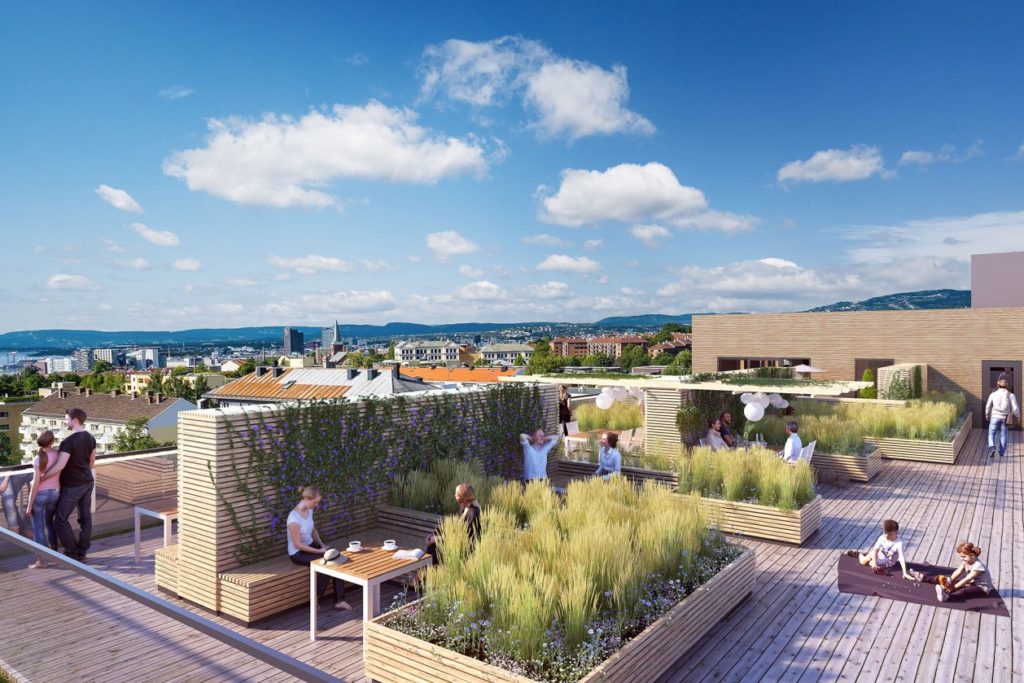
Everybody at the University is white.

Everybody at the National Museum is white.
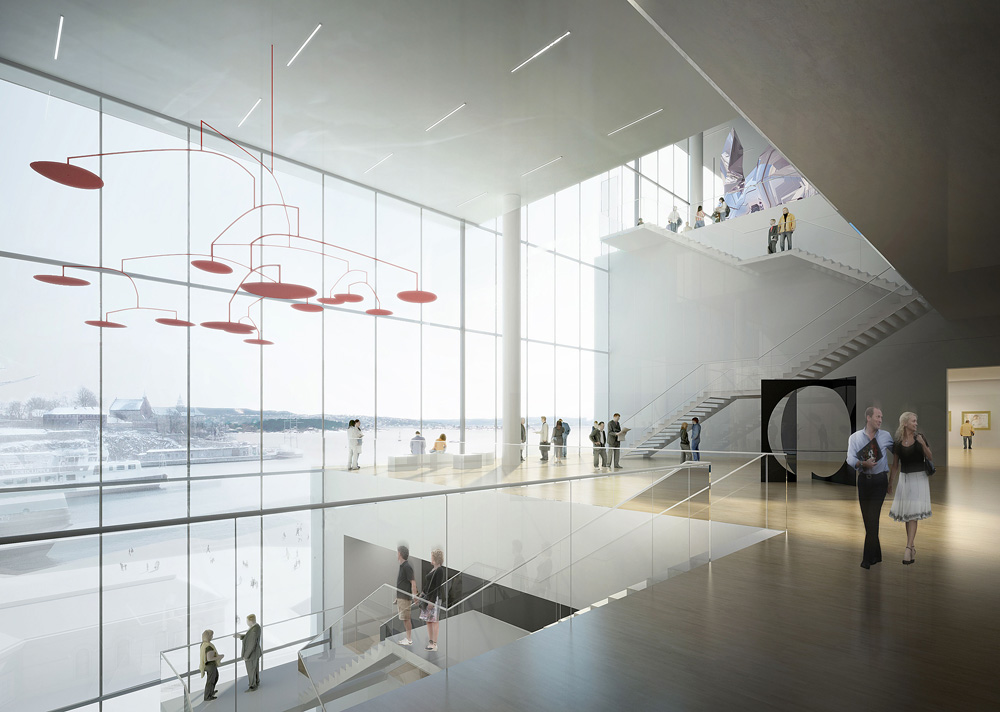
Everybody in Uelandsgate is white.
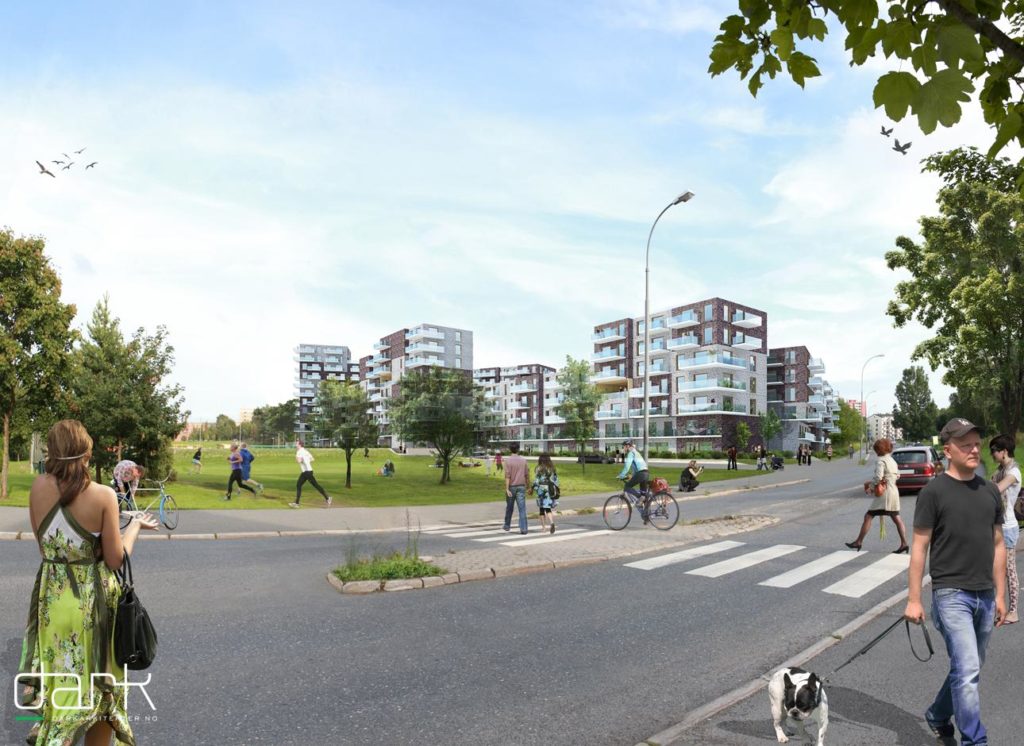
Everybody in the park at Tullinløkka is white.
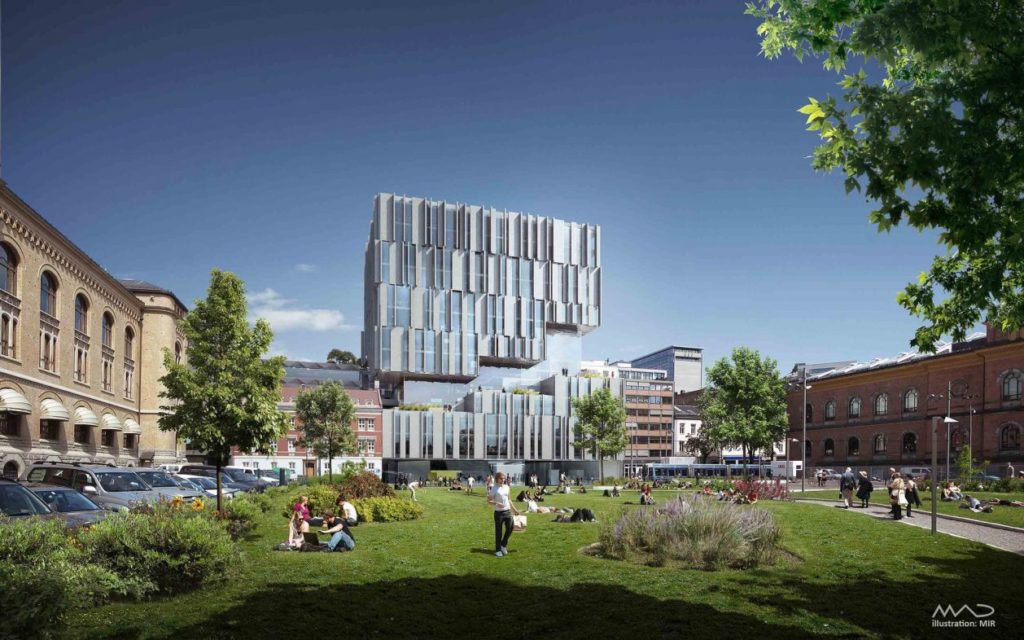
Everybody in the new Munch Museum is white.

Though the place is strangely quiet.
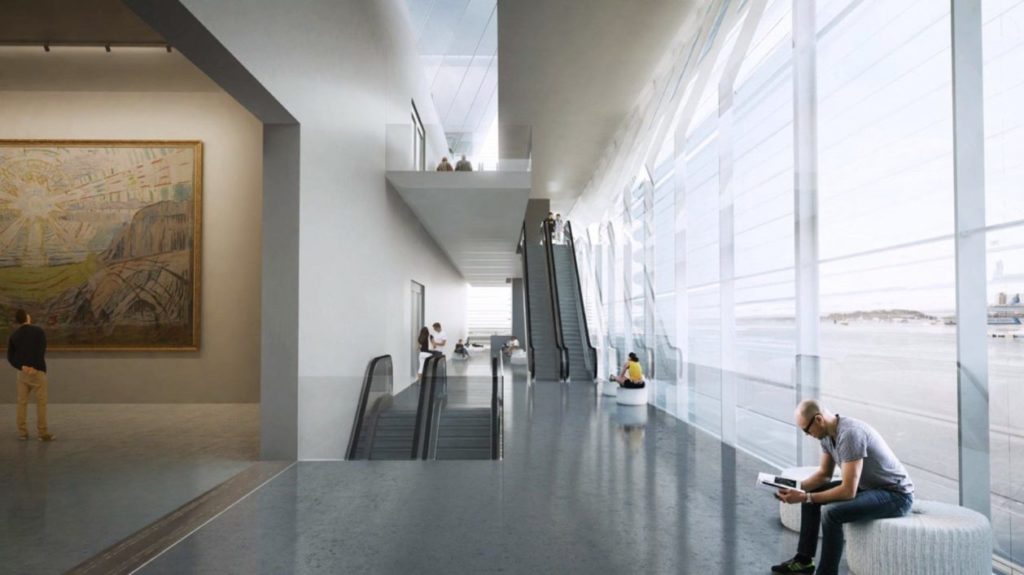
Everybody down at Aker Brygge is white.

Everybody hanging out at the Stasjonsallmenningen is white.
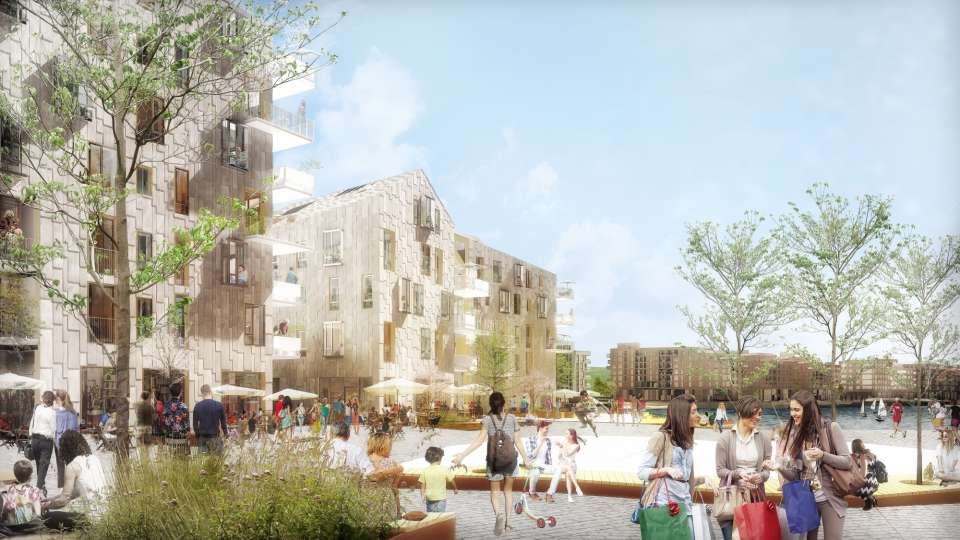
And it goes without saying that anybody who has actually made it inside a luxury apartment, in this dream, is exceptionally white. Sometimes, their clothes are white, their shoes are white, their laptop is white, even the flowers on their balcony are white.

But here’s something. I found this one visualisation of the new Valle Hovin development, a sports stadium and a new high school, and if you look very closely, I think it’s possible to imagine that, amongst the blurred generic figures, you’ve seen a brown face. That little guy in the t-shirt on the right hand side, maybe.
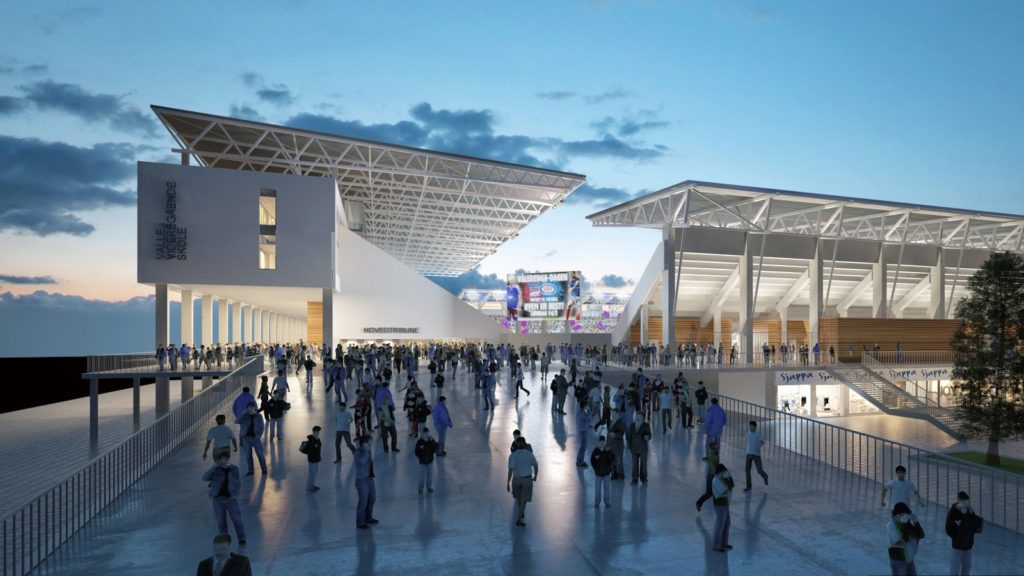
Yes, I’m pretty sure. And that wouldn’t be so strange because – wake up, Neo! There is no spoon – a typical year in Valle Hovin videregående skole looks like this.

And there’s nothing very special about Valle Hovin. You can pick just about any year in any high school you like in the Oslo area. So, I did. This is Ulsrud VGS.
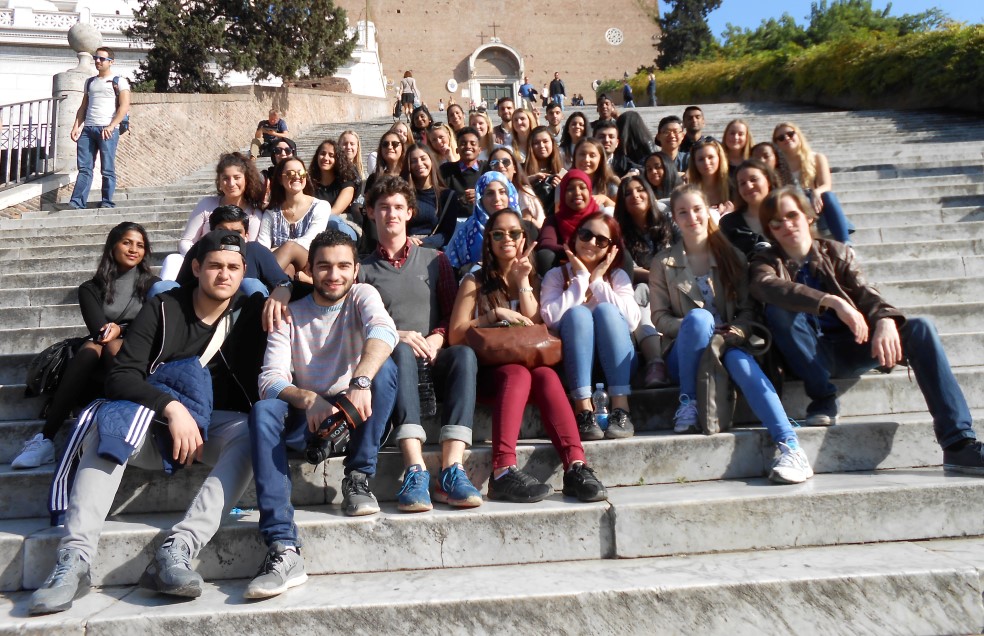
This is Elvebakken.
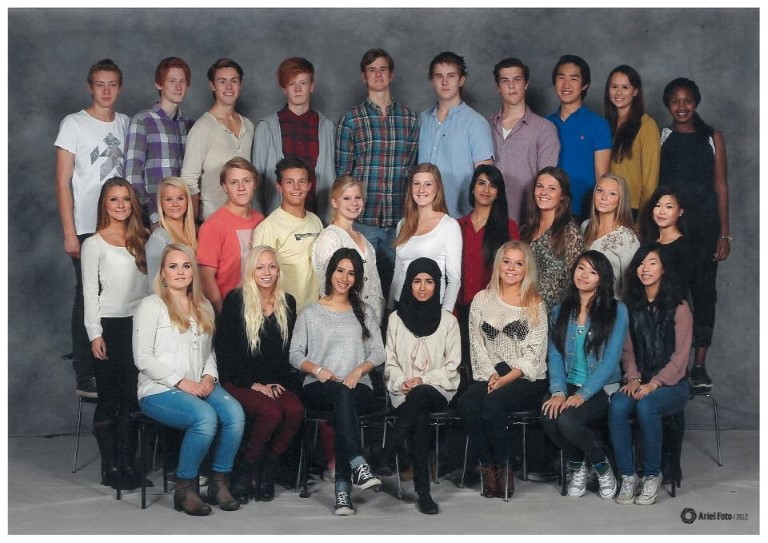
Prizewinners from Stovner.

This is a class at Sofienberg.
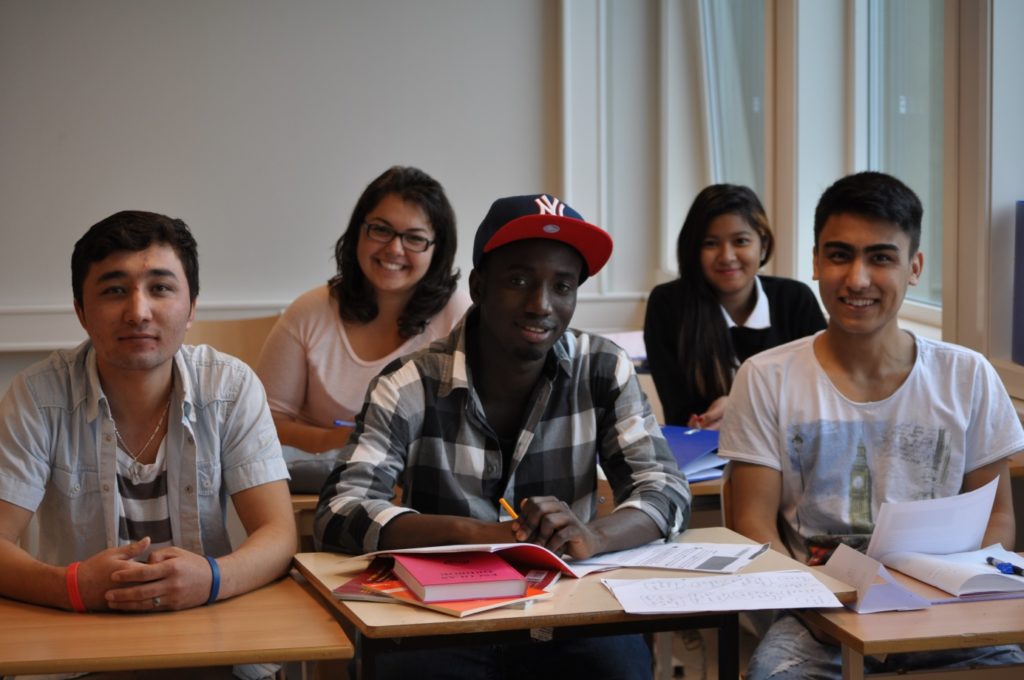
This is Fyrstikkalleen.
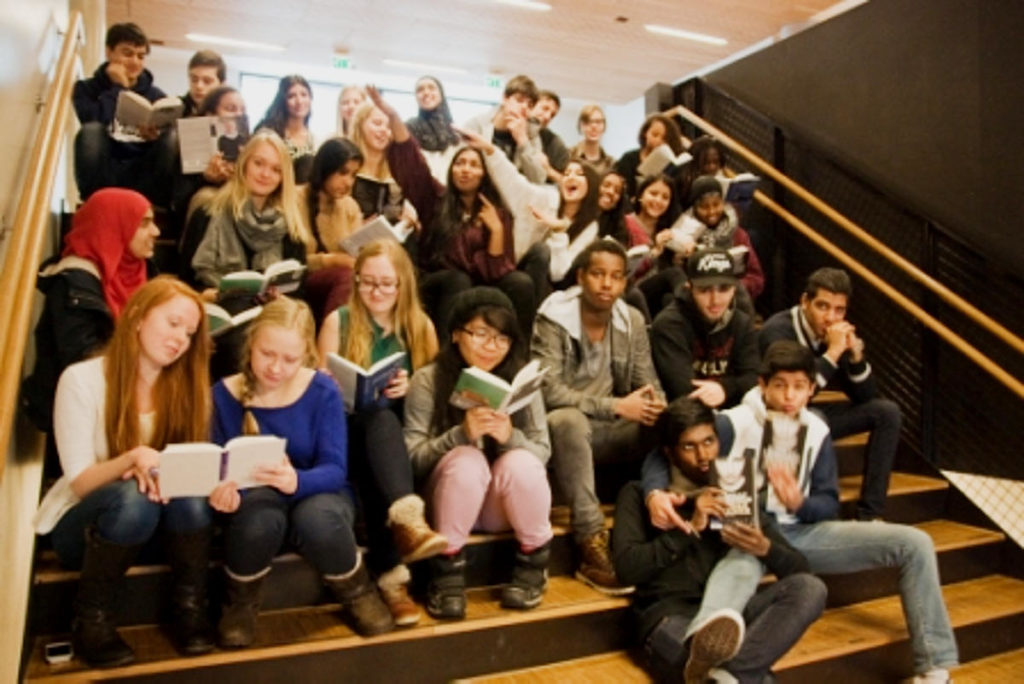
High achievers from Blindern.
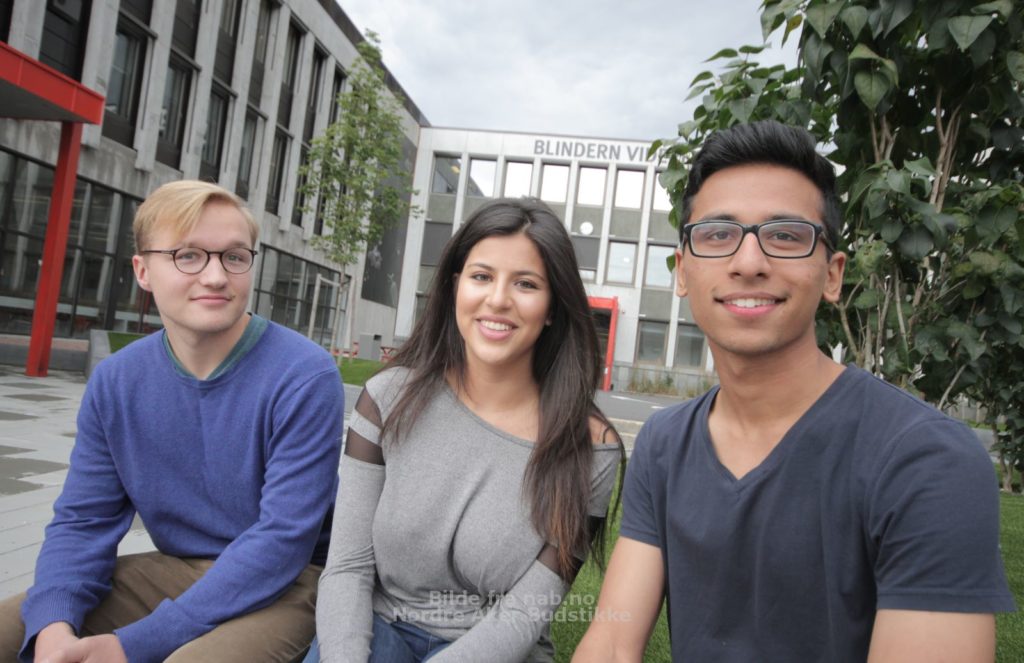
A business start-up course at Hersleb.

This gang is from the private Akademiet VGS.

And this is a publicity shot from Etterstad.

Now, this is Oslo. It ain’t exactly Harlem in the twenties I admit, but that’s not the point. What this generation of teenagers represents is something that the developers’ digital fetish-fantasies of egrets and Segways and shining Aryan monoliths definitively don’t: the actual future of the city.
Of course, in the future, everyone who matters in Oslo will be bourgeois, because in the world of property, which is to say Oslo, which is to say the world, nobody else matters, and nothing else matters. Beyond this, class and ethnicity remain closely mapped, and social mobility asymptotically approaches zero.
It is surely legitimate to ask how things got this way and also, surely, time for this broken process of so-called development – in hopeless thrall to ROI, crippled by prejudice (real) and ignorance (surely fake) of the basic conditions of contemporary city life – to be overturned and replaced with a system that will oppose, and not enable, the systematic exclusion of ordinary people from their own lives.
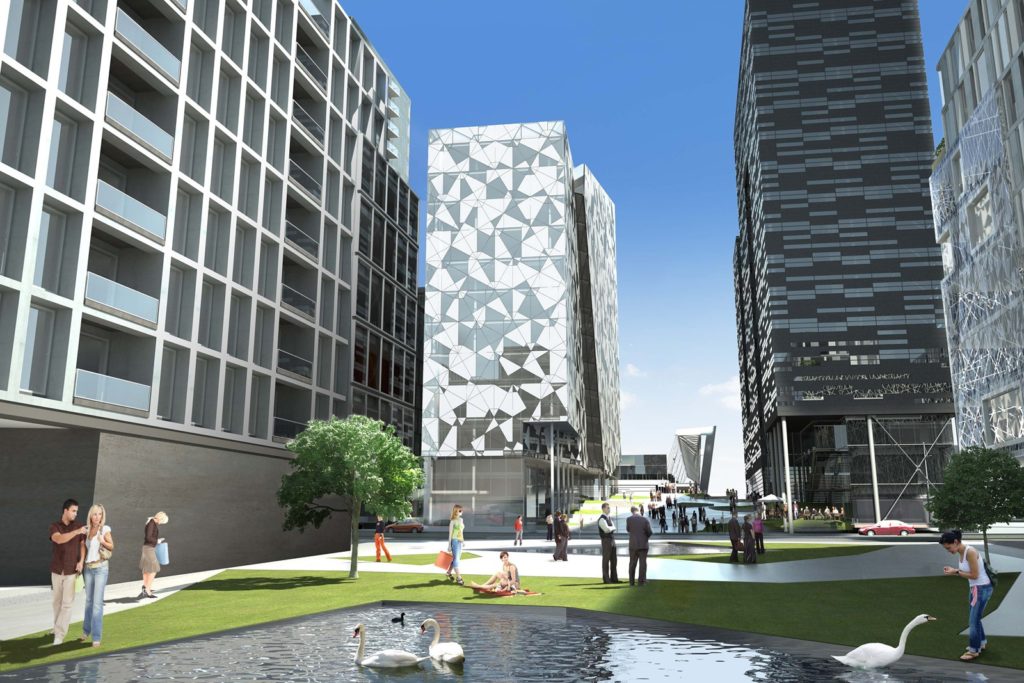
IV.
The Swan
Andromache, I think of you. This little stream,
Wretched mirror where long ago there shone
The grandeur of your widow’s grief,
This false Simoīs swollen by your tears
Flooded at once my fertile memory
As I crossed the new-built Carrousel.
The old Paris is no more (for cities change
More quickly than a human heart).
Only in my mind I see the makeshift stalls,
The heaps of brick and rough-hewn capitals,
The grass, wet stones overgrown with moss,
The débris shining on the tiles.
This was once the site of a menagerie
Where, one morning, under cold, clear skies
As the workers were waking up and the dust
Rose like a dark hurricane into the silent air
I saw a swan which had escaped its cage
Scuffing its webbed feet on paving stones,
Dragging its white plumage over the rough earth.
By a dry ditch the creature opened its beak
Restlessly bathed its wings in dust
And said, its heart full of the lakes it once knew:
“Rain, when will you fall? Lightning, when will you strike?”
That unlucky bird, strange and fatal myth
Sometimes towards the sky, like Ovid’s fool
Towards a sky ironically and cruelly blue,
Its neck convulsing, stretched its avid head
As though it were reproaching God.
Paris changes! But nothing in my melancholy
Has changed. New palaces, scaffolding, blocks of stone,
Old neighbourhoods, all turn to allegory
And memories weigh more than stone.
Outside the Louvre an image overcomes me:
I think of my great swan, with its mad gestures,
Like the refugees, ridiculous and sublime,
Torn at by desire without end. And then of you,
Andromache, fallen from a husband’s arms
Poor creature, into the hands of Pyrrhus,
Bowed down in rapture before an empty tomb
Widow of Hector, alas, and Helenus’ wife.
I think of the negress, wasted and consumptive,
Trudging through muddy streets, seeking with a haggard eye
The absent palm trees of proud Africa
Behind these immense battlements of mist;
Of anyone who has lost that which can never be found
Of those who drink deeply of tears
And suckle Pain like a good she-wolf.
Of the starving orphans withering like flowers.
Thus in the forest where my spirit is exiled
An old memory sounds out a blast on the horn.
I think of sailors abandoned on some isle,
Of the prisoners, the lost… of many others, too.
This essay was first published on Kunstkritikk, 28.03.19
Quotations are excerpts from Charles Baudelaire, “The Painter of Modern Life”, in The Painter of Modern Life and other essays, Phaidon, 1964 (first published in French, 1863), and Charles Baudelaire, ‘The Swan’, originally published as Le Cygne in Les Fleurs du mal, Auguste Poulet-Malassis, Paris, 1857. This translation, 2019. Shelley Rice quotes a line from ‘The Swan’ in her essay on Nadar in Parisian Views (MIT Press 1997, p.158) and started this whole wild goose chase.
List of illustrations
I
Édouard Manet, View of the 1867 Exposition Universelle, 1867. Nasjonalmuseet, Oslo.
Nadar (Gaspard-Félix Tournachon), Aerial view of Paris, 1868.
II
Forum Artis (Nasjonalmuseet), Kleihues + Schuwerk architects
Forum Artis (Nasjonalmuseet), Kleihues + Schuwerk architects
Viktor Freytan, Restaurant Romance, illustration for Kleihues + Schuwerk architects
Oslo Government Quarter, Bjarke Ingels Group
Oslo Government Quarter, Snøhetta
Oslo Government Quarter, Bjarke Ingels Group
Dronning Eufemias gate 18-22, MAD Architects & EVE Images
Schweigaardsgate S21, Lund + Slaatto Architects
Ruter/Oslo SmartCity
Bispevika, section B6, Dyrvik Architects for HAV Eiendom
Fornebu waterfront, Rodeo Architects/Haptic Architects
Lørenskog stasjonsby, Oxivisuals
Filipstad conference hotel, Space Group
Myntgata, Kvadraturforening
Koksa boligbydel, Fornebu, Code Architects
Diagonalen (Deichmann central library), Lund Hagem Architects
Fjerdingby regulation plan, Dyrvik Architects
Stovner bad, Dyrø & Moen Architects
Bispevika B7, A-Lab Architects
Nydalen 32B, SAAHA A.S.
Fornebuhagen, Nansenparken/Fornebu, Dyrvik Architects
Østre Akervei 19, Reaktor Architects
Forum Artis (Nasjonalmuseet), Kleihues + Schuwerk architects
Eufemias Plass (PriceWaterhouseCoopers/Microsoft building), A-Lab
Diagonalen (Deichmann central library), Lund Hagem Architects
Myrenskvartalet, Dyrø & Moen Architects
Brugata, White Architects
Kjelsrud, ARC Architects
Grorud T-bane station, R+F+S Architects (student competition)
Ensjølyst, Røisland A.S./Neptune
University of Oslo, Life Science building, Nordic Architects
Nasjonalmuseet, Henning Larsen Architects
Uelandsgata, DARK Architects
Tullinløkka, MAD Architects
Lambda (Munchmuseet), Herreros Architects/LPO Architects
Nasjonalmuseet, Nordic Architects
Stasjonsallmenningen, Helen + Hard Architects
Opera Quarter, A-Lab
Valle Hovin idrettspark, Lille Frøen Architects/Stefan Ekberg
III
Valle Hovin VGS, Vårt Oslo
Ulsrud VGS, school homepage
Elvebakken VGS, school homepage
“Fem gutter fra Stovner videregående skole tok seieren i idékonkurransen”, Groruddalen.no
Sofienberg VGS, nafo.oslomet.no
Open day at Fyrstikkalleen VGS, svovelpikene.no
Blindern VGS pupils, school homepage
Start-up camp at Hersleb VGS, school homepage
Akademiet VGS, school homepage
Etterstad VGS, school homepage
IV
Barcode development, Oslo, illustration by Placebo Effects

